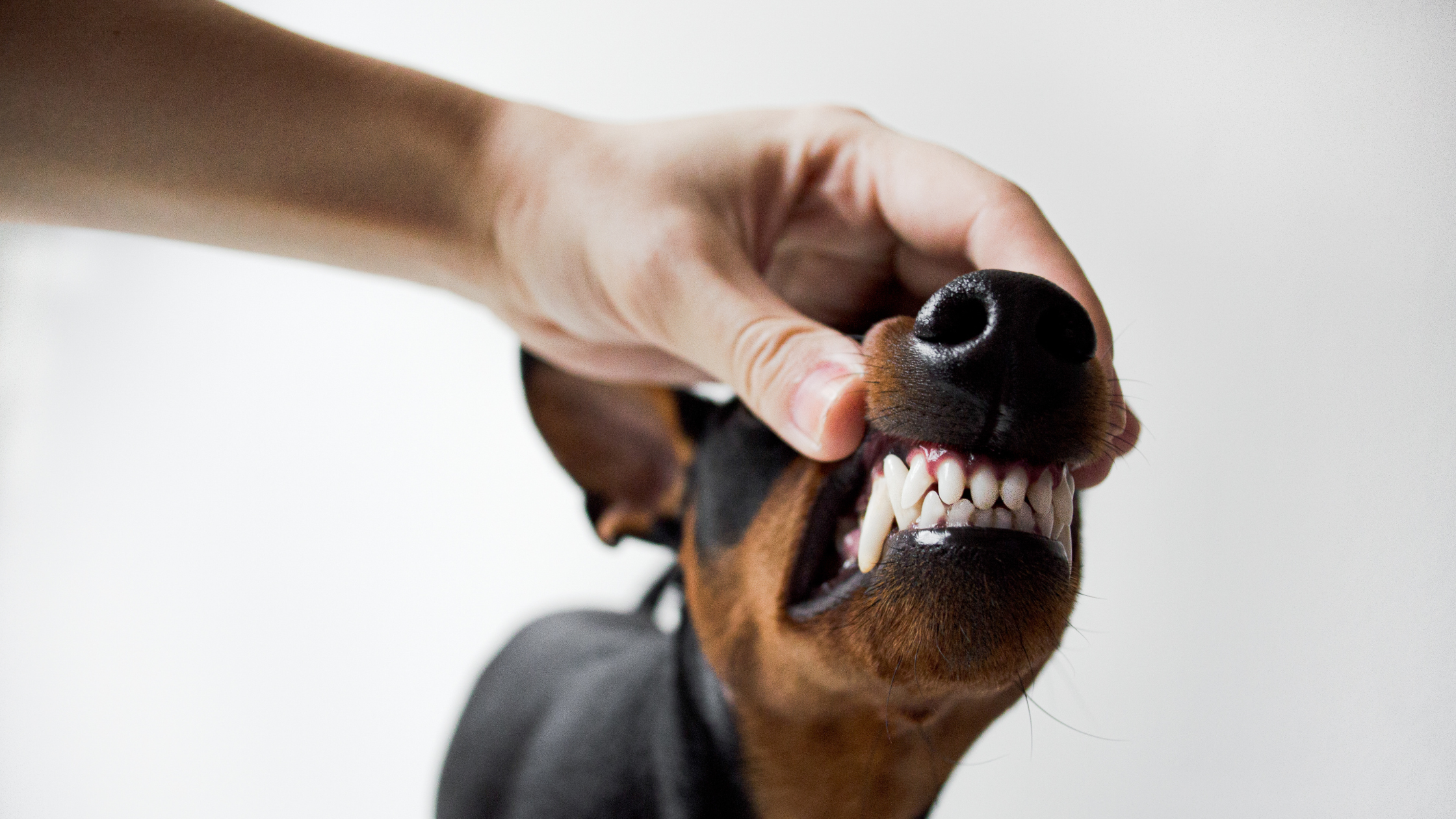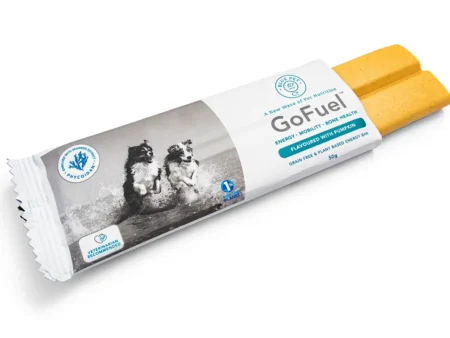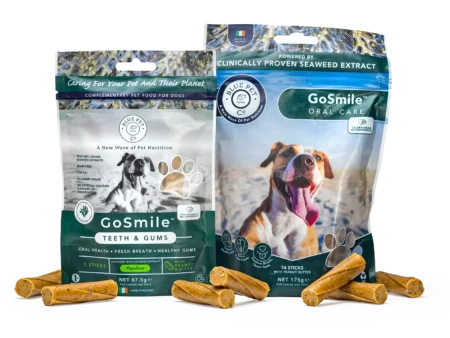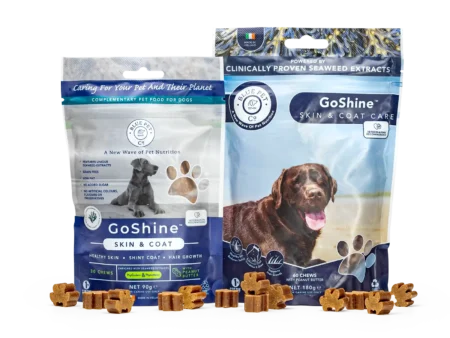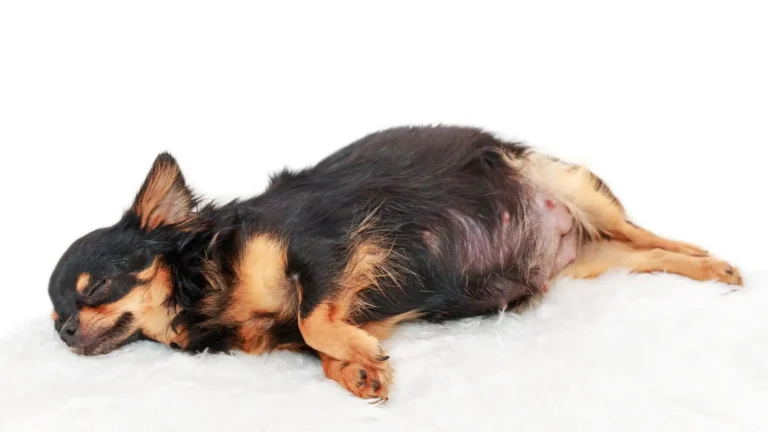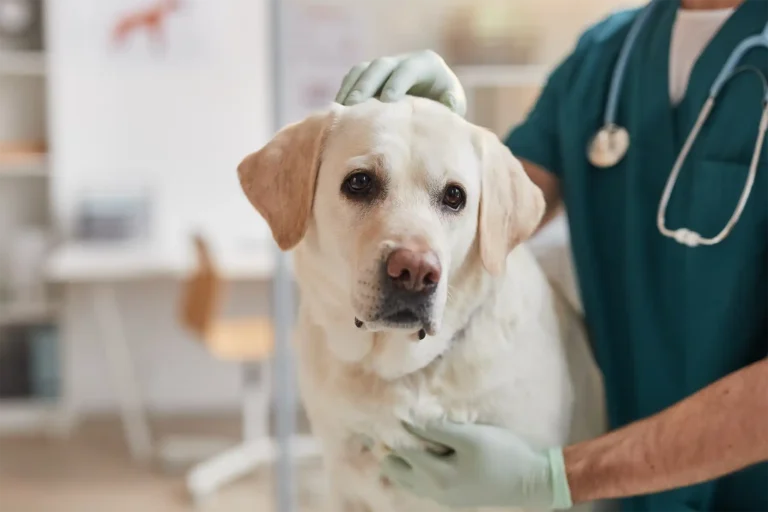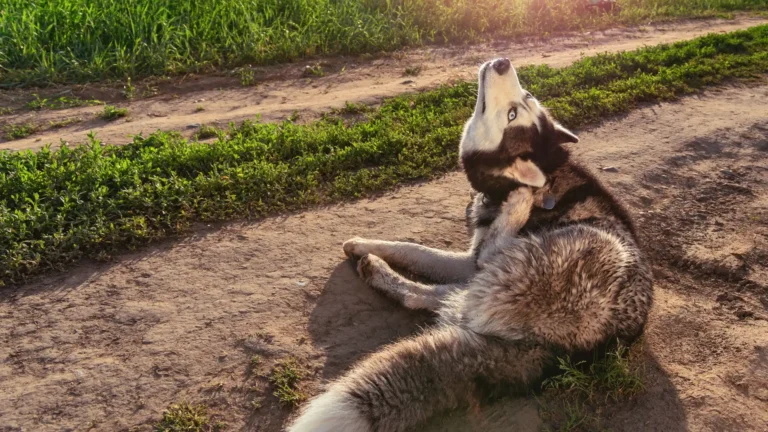A guide to brushing your dog’s teeth properly.
Maintaining your dog’s dental health is crucial for their overall wellbeing, affecting everything from comfort to lifespan. Oral health in dogs is often overlooked, but understanding the structure of canine teeth and preventing gum disease is key. Starting a dental care routine might seem challenging, especially with a reluctant dog, but this guide offers practical tips and expert advice to help. Learn how to properly brush your dog’s teeth and recognise signs of dental disease, ensuring your furry friend’s smile is as healthy as their joyful wag.
Why is dental hygiene important for dogs?
Just like humans, maintaining proper dental hygiene is crucial for dogs. Not only does it keep their teeth clean and healthy, but it also prevents a plethora of related health issues. Neglected teeth can lead to bad breath, gum disease, and painful infections. Over time, if left untreated, these small issues can develop into major health problems impacting the dog’s heart, liver, and kidneys due to the build-up of dental disease-causing bacteria in the bloodstream.
It’s not just the immediate discomfort that should concern pet owners; the long-term effects of poor oral care can be costly and difficult to manage. Consistent dental care, including brushing, helps to remove plaque, thereby reducing the risk of tartar buildup, also known as calculus, which can lead to serious periodontal disease in dogs. This is why incorporating strategies like daily brushing into a dog’s routine is essential for their overall well-being.
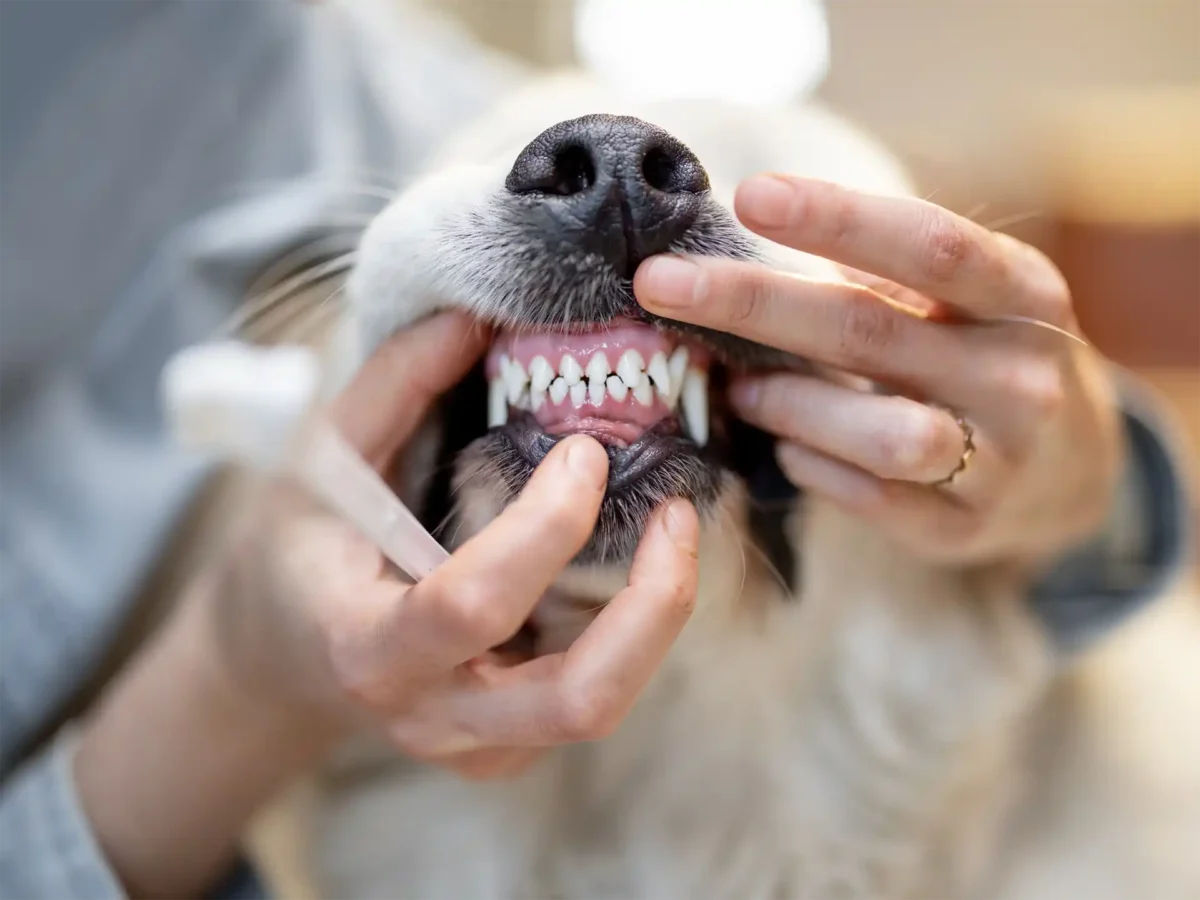
How Dental Care Can Prevent Disease in Dogs.
Good dental care can play a pivotal role in preventing various diseases in dogs. By regularly removing plaque and tartar through brushing, you decrease the risk of periodontal disease, which is closely linked to systemic diseases.
Research has suggested a connection between oral health issues like periodontal disease and systemic conditions like diabetes and heart disease. The same bacteria that cause dental problems can gain access to the bloodstream and affect different parts of the body. Moreover, inflammation in the mouth can also lead to further systemic inflammatory responses, causing additional health complications.
Here is a table summarising the key elements of a dental care routine for dogs:
| Dental Care Task | Frequency | Benefits |
| Brushing Teeth | Daily | Removes plaque, reduces bad breath |
| Professional Dental Clean | As recommended by vet | Removes hardened tartar, prevents periodontal disease |
| Dental Treats/Toys | Regularly, as per product guidelines | Helps clean teeth mechanically, reduces plaque. Incorporate GoSmile Dental Sticks to enhance this routine effectively. |
By adopting a proactive approach to dental hygiene, you can help your dog avoid the discomfort and dangers of oral diseases, ensuring they have a happy, healthy, and full life.
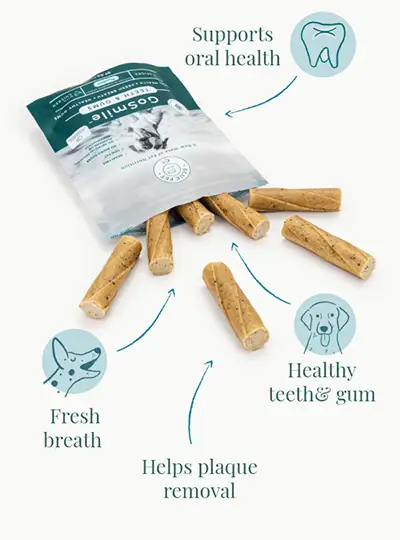
GoSmile Dental Stick
GoSmile Dental Sticks are expertly designed to enhance your dog’s oral health. Formulated with PhytoDent™, a blend of seaweed extracts from Ascophyllum nodosum and Fucus vesiculosus, these dental sticks are rich in Fucoidan, marine antioxidants, vitamins, and minerals. These ingredients synergistically promote healthy gums, reduce plaque buildup, and freshen breath
A field study highlighted the effectiveness of GoSmile Dental Sticks, with results showing improved oral cleanliness, reduced halitosis, and longer chewing times in dogs. Regular use not only supports daily dental hygiene but also helps in preventing periodontal disease by controlling the growth of harmful oral bacteria and ensuring your dog’s mouth remains healthy and comfortable.
Getting started with dental care.
Embarking on a dental care journey with your furry companion is a pivotal step in safeguarding their health and well-being. Dental care for dogs isn’t just about fresh breath—it’s an integral part of their overall hygiene that cannot be overlooked. Setting the foundation for a stringent oral hygiene routine is simpler than it might seem and begins with familiarising your dog with the process.
The keys to success are patience and persistence. Start gradually by allowing your dog to get comfortable with the sensation of having their mouth and teeth touched. Use positive reinforcement techniques such as praise and treats to create a positive experience around teeth-cleaning activities. Initially, this might involve simply lifting your dog’s lips to inspect the teeth and massaging the gums lightly with your finger. Over time, your dog will learn to associate these activities with a rewarding outcome, making it easier to progress to actual brushing.
In addition to behavioural preparation, you’ll want to ensure your dog has access to chew toys and dental treats as part of their dental care routine. These not only provide entertainment and stress relief for your dog but also help reduce plaque buildup through the natural action of chewing. Moreover, scheduling regular professional dental cleanings with your veterinarian is essential to tackling any tartar that at-home brushing can’t handle, and to closely monitor your dog’s oral health.
Introduction to daily brushing.
Instituting a regular brushing schedule is pivotal in curtailing the advance of dental disease in dogs. Daily brushing is the gold standard, as plaque can begin to mineralise into tartar in as little as 24 to 36 hours. If daily brushing is not feasible, aiming for a minimum of three to four times a week can still afford considerable benefits to your pet’s dental hygiene.
Choosing the right toothbrush and toothpaste for your dog.
Selecting the right tools is crucial for an effective dental care routine. When it comes to toothbrushes, options tailored to the canine mouth will provide the most comfort and efficacy. Look for toothbrushes with soft bristles to avoid irritating the gums, and consider the size of the brush in relation to your dog’s mouth. Smaller breeds may require a smaller brush, while larger breeds may be more accommodating to a standard size. Double-headed toothbrushes with brushes at different angles can simultaneously clean multiple tooth surfaces, enhancing the brushing process.
For the toothpaste, it’s important to use a product specifically formulated for dogs. Pet toothpaste comes in a variety of flavours that are more appealing to canine palates and are safe for dogs to swallow. Never use human toothpaste, as it often contains ingredients like xylitol, which is toxic to dogs.
| Toothbrush Type | Description | Suitable For |
| Standard Brush | Long-handled with soft bristles | Any size dog; owners with good dexterity |
| Finger Brush | Soft plastic brush that fits over the finger | Dogs new to brushing; sensitive gums |
| Double-Headed Brush | Brushes at two angles for different surfaces | Efficient cleaning of all tooth surfaces |
| Toothpaste Flavour | Description |
| Poultry | Often most appealing to dogs |
| Beef | Provides a meaty taste many dogs love |
| Peanut Butter | A popular choice for dogs who like treats |
| Mint | Freshens breath and is safe for dogs |
Five Tips for Dogs That Hate Having Their Teeth Brushed.
Here are five tips to help make the process more manageable:
- Go Slow: Start by introducing your dog to the concept of brushing gradually. Let them first get used to the smell and taste of pet toothpaste, which is specially formulated for their health and free from harmful ingredients like those found in human toothpaste.
- Desensitise: Prioritise creating a positive experience. Gently touch their mouth and teeth without brushing to desensitise them to the sensation. Praise and reward your dog for calm behaviour to reinforce the positive association.
- Choose the Right Tools: Use a finger brush or a toothbrush with soft bristles designed for dogs. Ensure it’s the right size for your dog’s mouth to provide comfort and effective cleaning of all tooth surfaces.
- Perfect Technique: Once your dog is comfortable, brush in a gentle, circular motion. Focus on one area of the canine teeth at a time to avoid overwhelming them.
- Routine Matters: Incorporate tooth brushing into your dog’s daily routine. Consistency helps your dog know what to expect, potentially reducing their resistance to brushing over time.
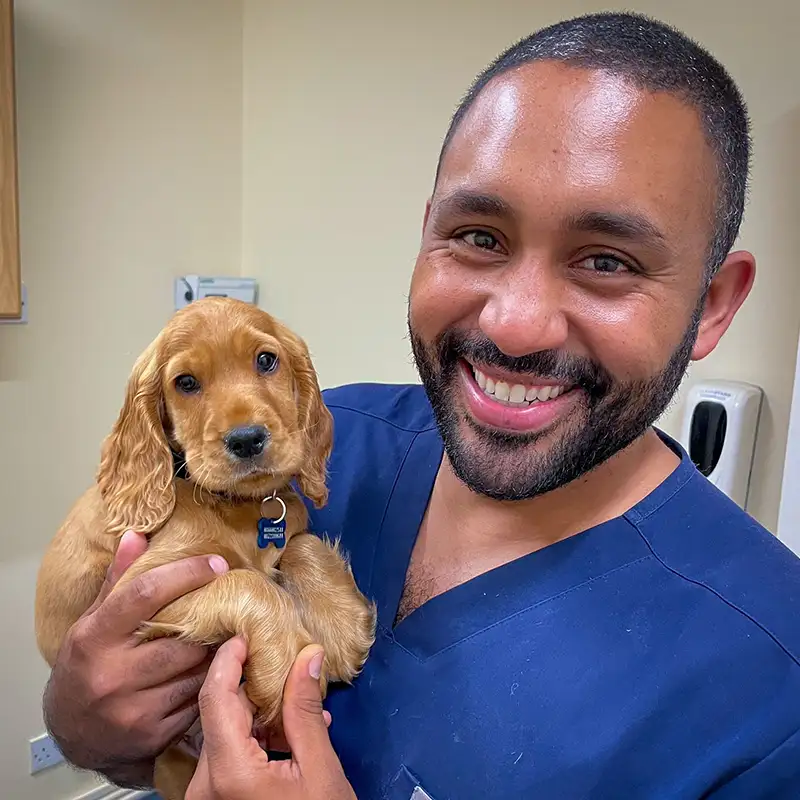
Our resident Vet Dr Bob.
For additional guidance and expert tips on brushing your dog’s teeth, check out Dr. Bob’s video on Instagram.
Tips for a positive brushing experience for your dog.
Turning tooth brushing into a positive experience is crucial for you and your dog. To do this, associate brushing with affection and rewards. Here’s how:
- Create a Calm Environment: Brush your dog’s teeth in a quiet space without distractions to keep them calm.
- Positive Reinforcement: Offer praise and treats during and after the brushing session. This can make the experience something your dog looks forward to.
- Routine: Make brushing a part of your dog’s daily routine so they know what to expect, reducing anxiety or resistance.
- Short Sessions: Initially, keep the sessions brief, then gradually increase the duration as your dog becomes acclimated.
- Familiarity: Let your dog sniff and lick the brush and toothpaste before you begin. This helps them get used to new items.
- Be Patient and Gentle: Use a soft touch and be patient. If your dog resists, try again later rather than forcing the issue, to avoid negative associations.
With patience and the right approach, teeth brushing can become a bonding activity that helps maintain your dog’s dental health and enhances your relationship with your canine companion.
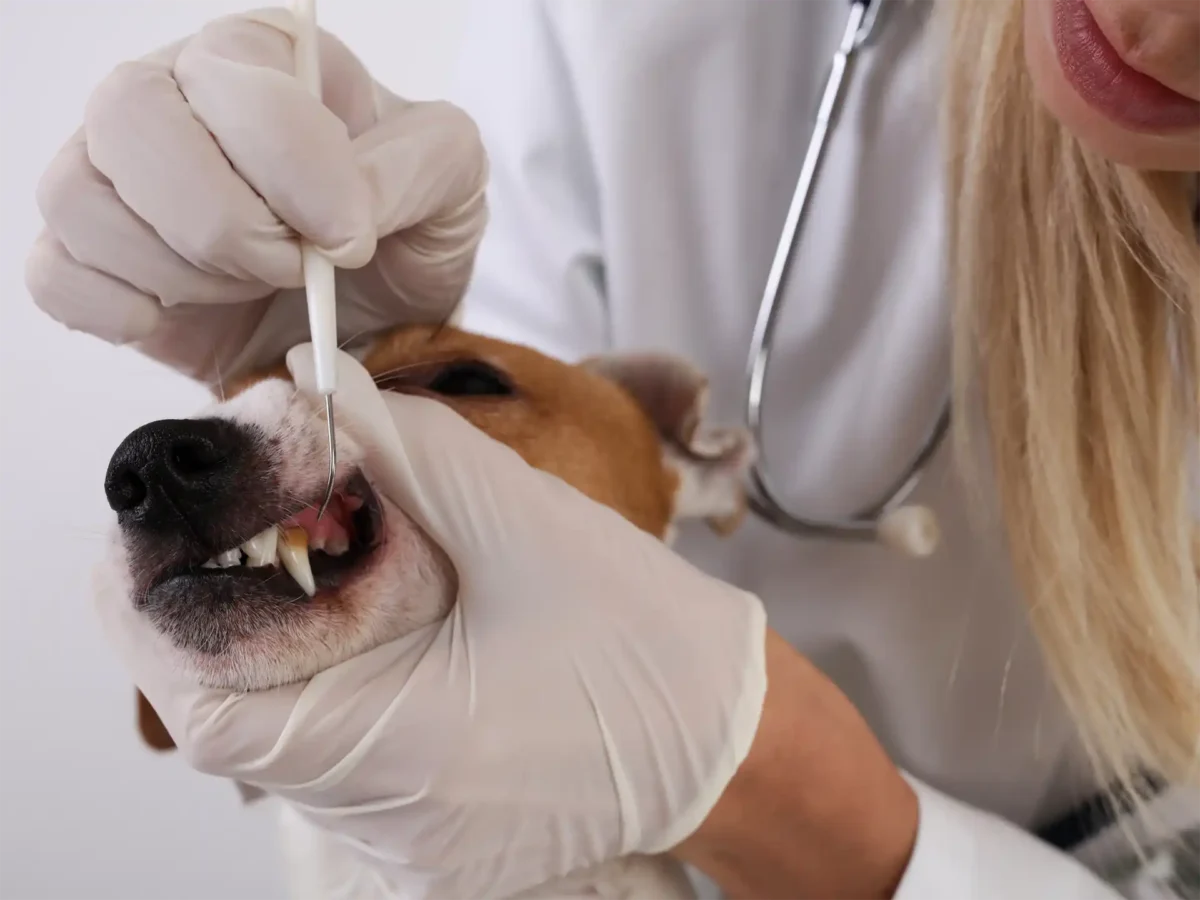
Common symptoms of dental disease in dogs:
- Bad Breath
- Plaque and Tartar
- Red and Swollen Gums
- Loose or Missing Teeth
- Nasal Discharge and Sneezing
- Drooling
- Difficulty Eating
The role of veterinary dental cleaning.
Veterinary dental cleaning, otherwise known as professional dental cleaning, is an essential component of canine dental care. This procedure is typically performed under anaesthesia and allows a veterinarian to conduct a thorough examination and cleaning of a dog’s teeth and gums. During a dental cleaning, the vet can remove plaque and tartar from above and below the gum line, which is crucial for the prevention of periodontal disease.
After the cleaning, the vet will polish the teeth to smooth the enamel and prevent future plaque buildup. They can also take this time to perform any necessary dental procedures, such as tooth extractions or repairing damaged teeth. Veterinary dental cleaning not only contributes to the health of the teeth and gums but also allows for the early detection of potential issues before they become serious.
Regular professional cleanings, as recommended by your vet, are an important part of a comprehensive dental care plan. These cleanings can help to ensure long-term oral health, reducing the risk of gum disease and the potential for dental disease to affect the dog’s overall health.
Conclusion.
In conclusion, maintaining your dog’s dental health is essential not only for their comfort but for their overall well-being and longevity.
Regular brushing, professional cleanings, and the use of innovative products like GoSmile Dental Sticks, which are specially formulated with PhytoDent™ to reduce plaque buildup, are critical components of a comprehensive dental hygiene regimen. By adopting a proactive approach to dental care, recognising early signs of dental disease, and committing to a consistent oral hygiene routine, you ensure that your furry friend enjoys a healthier, happier life free from the pain and complications associated with dental disease. Remember, a healthy mouth is a significant part of your dog’s overall health, underscoring the importance of regular veterinary check-ups and daily care routines to keep those tails wagging with joy.
